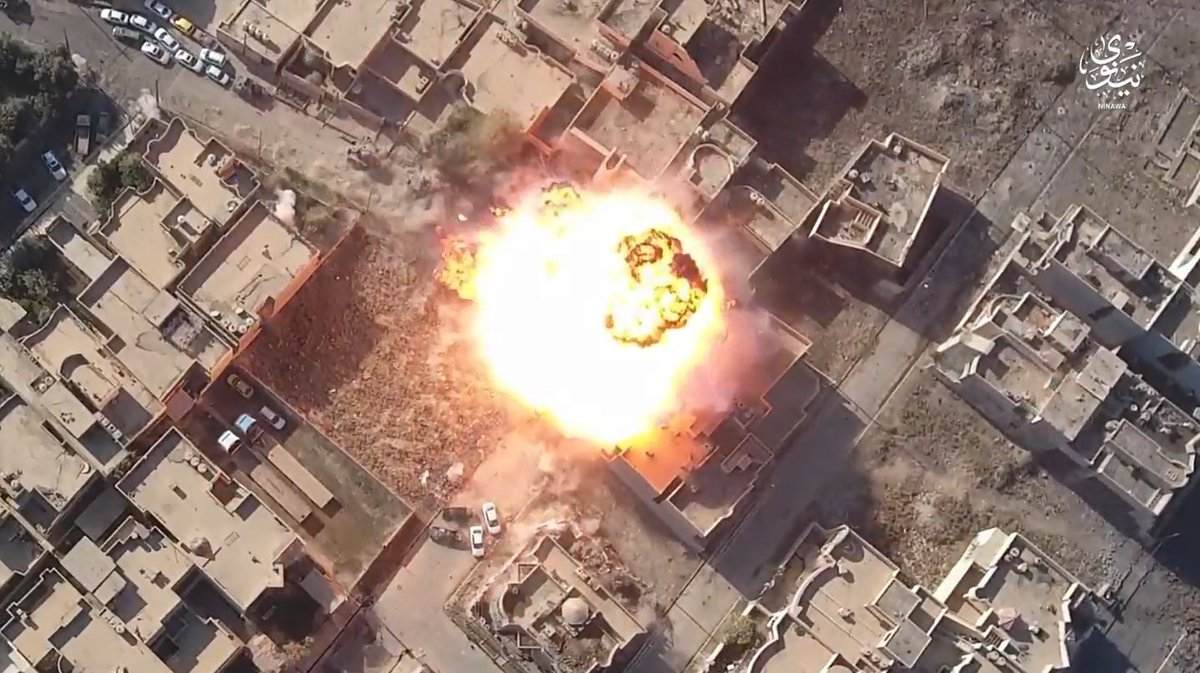The Remarkable Case of an Iraqi Car Bomb
This story has been updated since it was first published; the mystery has been solved. Read more in the updates below the article.
A car bomb parked in a street of the Al-Hurriyah district of Baghdad killed at least eight people and wounded 30 more on October 30, 2016.
At least, that’s what media reports suggested. Security camera footage that emerged three days later painted a fundamentally different picture: people prepared to run to the scene, pretending to be dead and waiting to be picked up by medical personnel. What is going on here?
This article aims to gain a better understanding of what has happened with that remarkable car bomb in Baghdad. First, the (visual) sources that could be found will be presented. Subsequently, these sources will be analysed, after which a discussion of the results will follow. The article ends with a conclusion with open ends, and updates will be added if more information reaches us.
Sources
Initial Reports
The first mention of a car bomb in Baghdad seems to be a tweet [archived] published on October 30 at 16:11 local time. It says that a car bomb caused an explosion in the Al-Hurriyah district:
عاجل : عمليات بغداد … انفجار الحرية ناجم عن انفجار سيارة ملغمة كانت مركونة بالقرب من احد المحال التجارية خلفت… https://t.co/XPof2lMLE7
— الاعظمية نيوز (@adhamiyahnews) October 30, 2016
Roughly fifty minutes later, at 16:58 local time (UTC+3), the first numbers of injuries are reported on Twitter [archived], saying that thirteen have bee killed and injured in the Al-Hurriyah explosion:
#ريحان_نيوز |??
مقتل وإصابة 13 شخصاً بتفجير سيارة مفخخة في حي الحرية شمال غرب #بغداد pic.twitter.com/YbHjoWbYmz— ❆ReYhan NeWs♻️ (@Reyhan_News) October 30, 2016
International news agency Reuters published the following news report [archived] at 18:08 local time, nearly an hour later after the explosion was first reported:
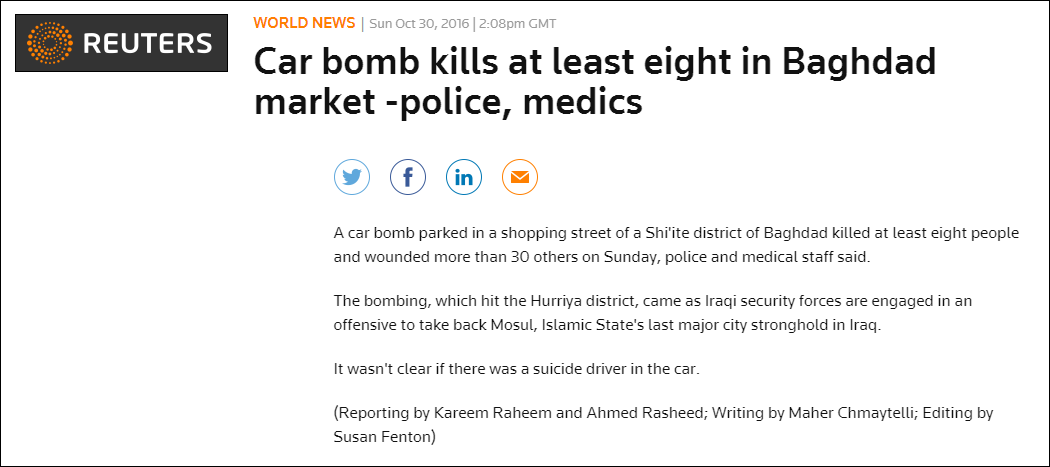
Figure 1 — News report by Reuters on the car bomb in northern Baghdad, published on October 30, 2016.
The car bomb was parked in a shopping street of Al-Hurriyah district in northern Baghdad, killing at least eight people and 30 others, according to Reuters citing “police and medical staff”.
The Associated Press (AP), a different international news agency, published a similar report, referring to a source within the Iraqi police. Other media outlets, such as The New York Times [archived] and Al Jazeera English [archived], used AP’s report for their own news coverage.

Figure 2 — News report by the New York Times on the car bomb, published on October 30, 2016.
Video: RT Arabic / Global News
A day later, on October 31, Russia Today’s (RT) Arabic service published a video at 18:04 local time (extracted via Amnesty International’s YouTube Metadata Viewer) of an aftermath of a car bomb in Baghdad. The accompanying text refers to the Reuters story that a car bomb in the Al-Hurriyah district killed eight people, thus suggesting that the scene shown in the video is the same incident as was reported by Reuters. The video was joined by a news report [archived]. The exact same video was also published without the RT watermark on Global News [archived], allegedly published hours earlier in the morning of October 31 (it is not clear to which timezone the website refers).
Photos: Associated Press
An AP photographer, Karim Kadim, also published four photos (1, 2, 3, 4; archived) of the site of the car bomb. According to accompanying text, the photos show “the aftermath of a deadly car bomb explosion that hit a popular fruit and vegetable market in a commercial street in Baghdad’s northwestern neighborhood of Hurriyah”. The photos have been used by a wide variety of media [archived] to refer to the car bomb incident.

Figure 3 — A screenshot of AP’s page which features the photo of the scene of the car bomb.
Video: Surveillance Camera
In the evening of October 31, footage emerged which shows a fundamentally different picture from the car bomb incident: no dead and horror, but people running towards a car that just exploded, then laying on the ground, pretending to be dead or wounded. The video appears to be a hand-held recording of an a different recording of a surveillance camera.
The surveillance video first appeared in a short version on October 31 at 20:49 local time on Twitter [archived]. A longer version of the video (2m15s) was published by INP+ on Twitter [archived] on November 1 at 14:05 local time. The clip is time-stamped as October 30, 2016, 03:39. Given the that there appears to be daylight, the time most likely refers to PM (post meridiem, meaning after midday). The same videos appeared later on YouTube, but were uploaded at later point in time.
The video starts with a man dressed in a white shirt and black trousers looking inside the car that will explode seconds later. A white Toyota pick-up truck is waiting for him at the other side of the street. A different man can also be seen in the car. Fourteen seconds later, the pick-up truck drives away.
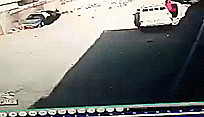
Figure 4 — A GIF of the surveillance camera video, showing how a man looks inside the car before driving off with someone else.
Just over ten seconds later, the car bomb explodes. No people can be seen close to the car at the moment of explosion.
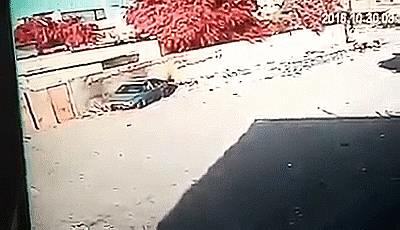
Figure 5 — A GIF of the surveillance camera video, showing how the car bomb explodes.
The car burns for a while before, around ten seconds later, fifteen men rush to the scene. Two of them continue running and leave the sight of the camera, while seven of them lay down on the ground as if they were injured or dead. The remaining persons appear to be shouting with raised hands at the scene.
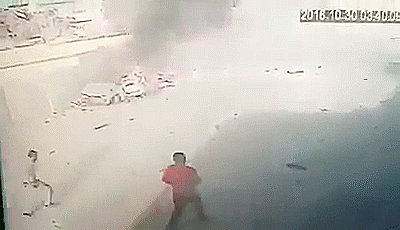
Figure 6 — A GIF of the surveillance camera video, showing how people run towards the scene, and then lay on the ground as if they were wounded.
Seconds later, a white vehicle or small van, perhaps an ambulance, arrives at the location. Some of the pretending-to-be-injured are carried into the vehicle before the video stops.
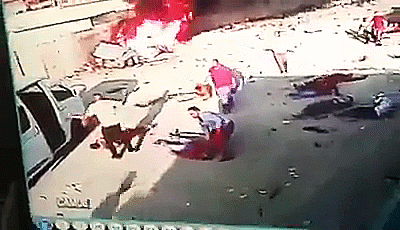
Figure 7 — A GIF of the surveillance camera video, showing how medical personnel arrives at the scene, just seconds later.
Video INP+
On November 2 at 13:21 local time, Iraqi Network Press Plus (INP+), an Iraqi media outlet, published another video [archived] of 2m20s long which shows the location a bit after the explosion, as a firetruck is at the scene. The car is smoking, and (what appears to be) blood can be seen on the ground.
#العراق | مقطع جديد لكاميرا شاهد عيان يثبت صحة فيديو كاميرا المراقبة التي وثقت عملية تفجير السيارة المفخخة في حي الحرية يوم 30/10/2016 pic.twitter.com/0wFQHZDEef
— INP+ (@INP_PLUS) November 2, 2016
Al-Hurriyah City Facebook page
Two photos and one video of the aftermath of the car bomb have come to our attention. The footage was uploaded on October 30 by a Facebook page focused on Al-Hurriyah [archived]. The footage is indeed from the same location. The Facebook post only mentions “light injuries”. An ambulance can be seen in the footage, as well as the same firetruck shown in the INP+ video.
من قلب الحدث انفجار سيارة ع طلاب في شارع المدارس قرب مدرسة الشهيد عادل ناصر والحمد لله والشكر اصابات خفيفه#حميد_الربيعي
Geplaatst door مدينة الحرية بغداد op Zondag 30 oktober 2016
Analysis
Location
All the available media (three videos, four photos) show the same area, as the images below show.
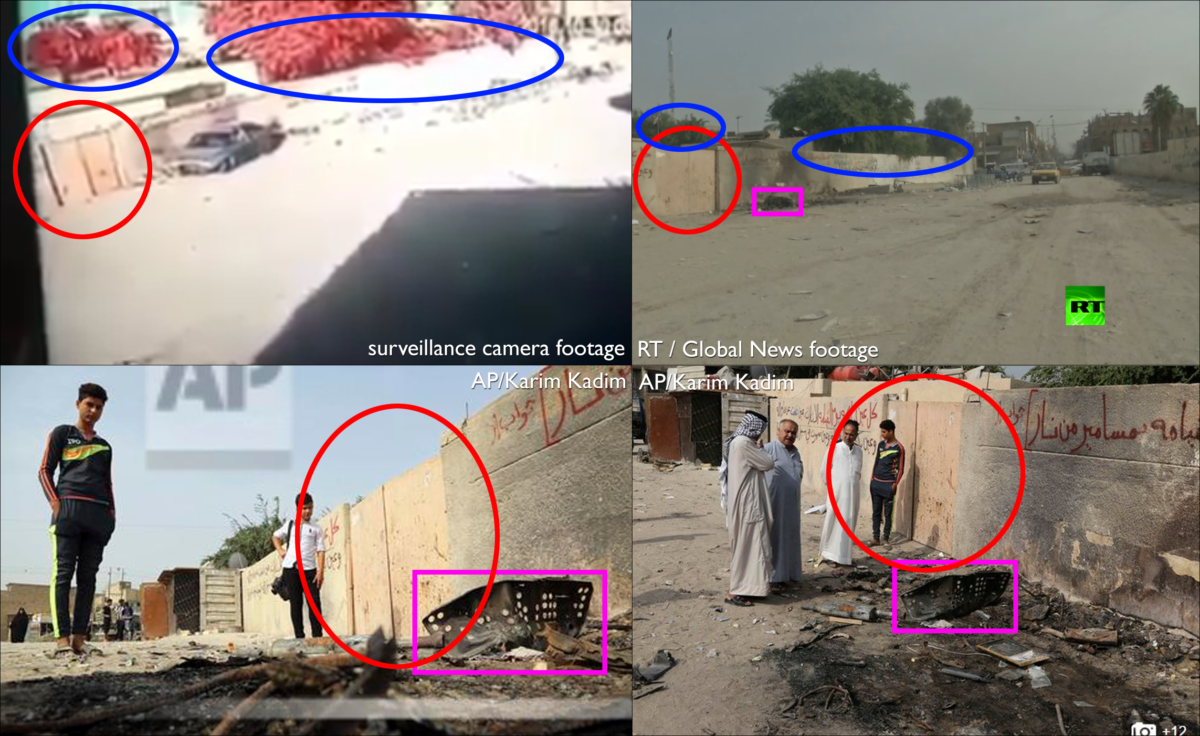
Figure 8 — Collage of four different images showing all footage shows the same location.
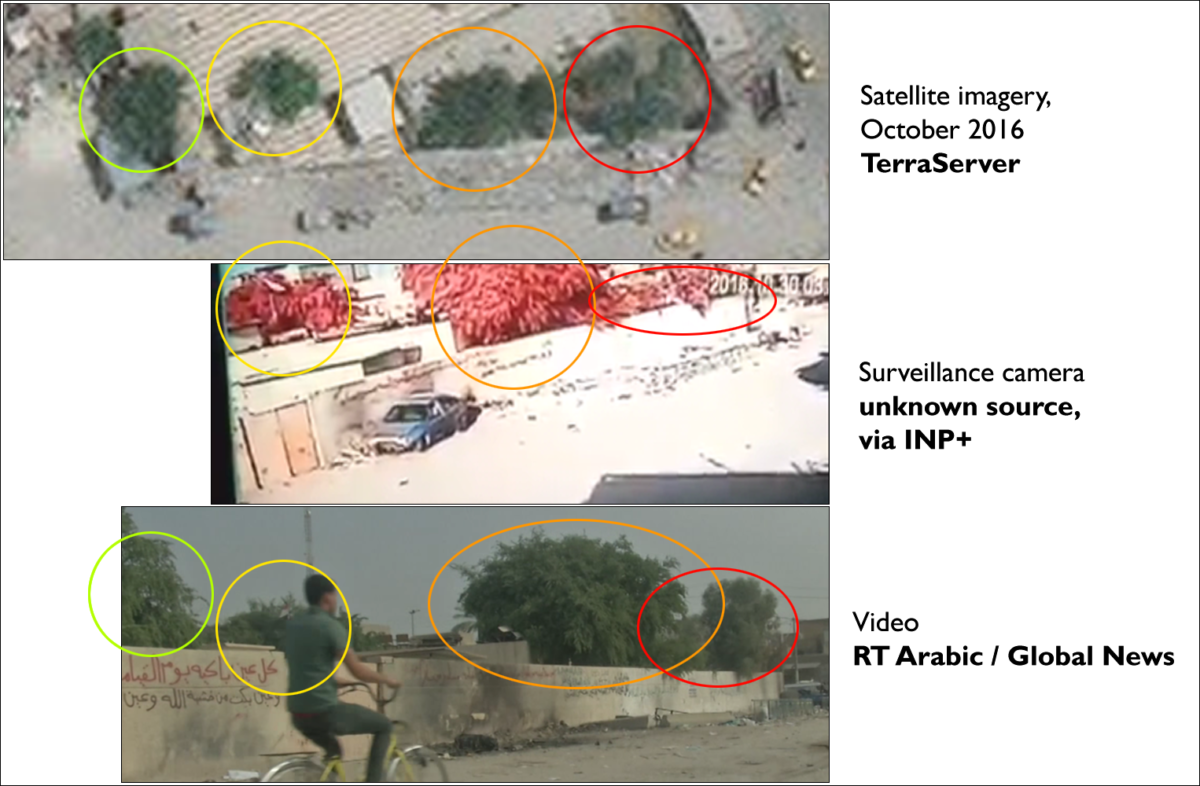
Figure 9 — The line of trees is one of the location features that allowed it to be geolocated.
This area can indeed be geolocated to the Al-Hurriyah district in northwest Baghdad, Iraq. The exact location is 33.3534106, 44.3075556 (Wikimapia, TerraServer).
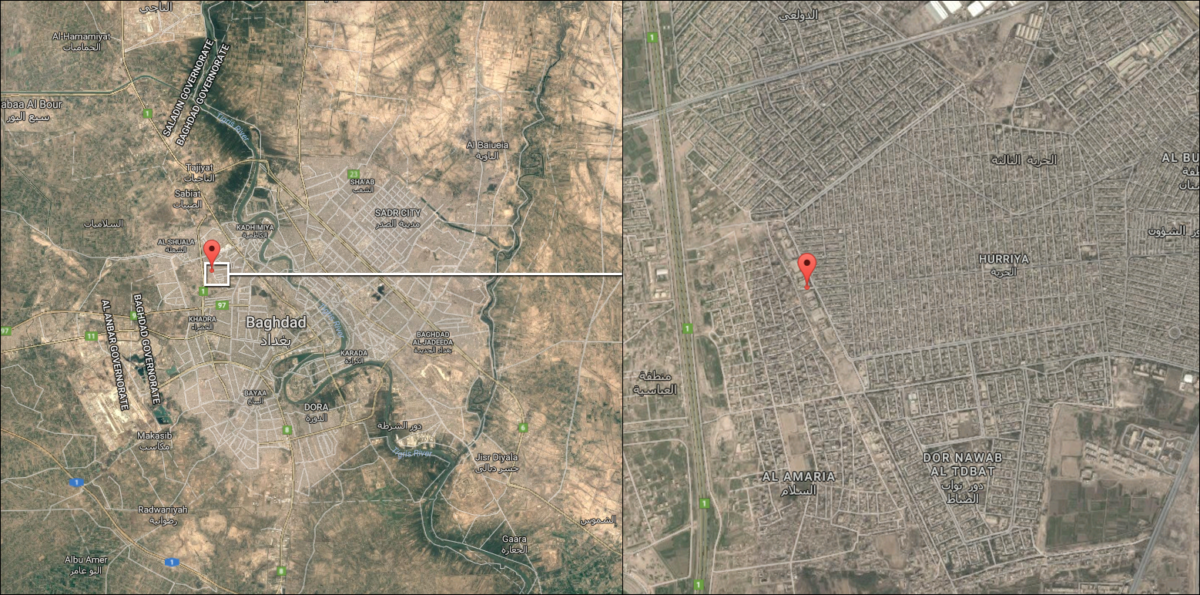
Figure 10 — Overview map of the location in Baghdad and in Al-Hurriyah. Courtesy of Google Maps/Digital Globe.
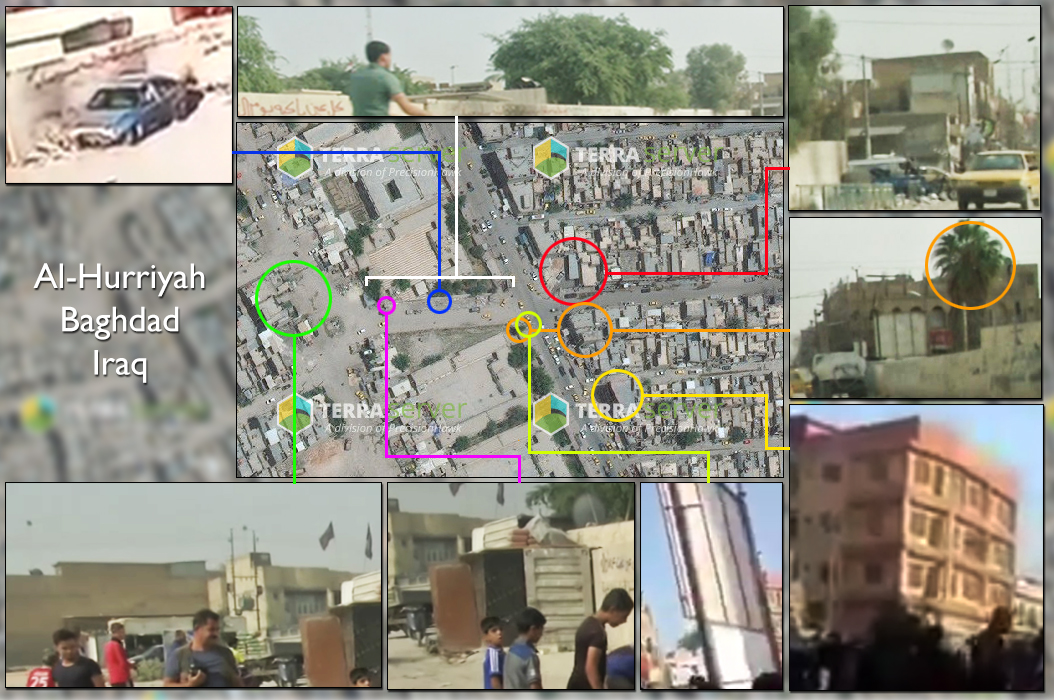
Figure 11 — Geolocation of the different videos.
There are several distinct features in the footage that have enabled this geolocation: the pattern of the trees, the buildings in the background (especially the five storey building), a high palm tree (on the premises of what seemed to be a school due to the many children, and indeed was a school), and a billboard.
The street in which the car bomb is parked is in between two schools, and is adjacent to the Street of Schools and continues into the Al-Hurriyah Main Street. The location is situated on the meeting point of three of Baghdad’s localities, according to Wikimapia: 426, 428, and 438.
Date
The date of the incident mentioned by the international news agencies is October 30, though no exact time is given. Reuters reported the incident at 17:08 local time. As mentioned under the section ‘Sources’, the first mention on Twitter of a car bomb was at 16:11 local time.
The surveillance cam footage is time-stamped as October 30, 2016 at “3:39”. It appears that this is indeed filmed during the afternoon, as the shadows are consistent with the position of the sun at that time, SunCalc shows. The car explodes when the time on the surveillance camera switches from 3:39 (PM) to 3:40 (PM).
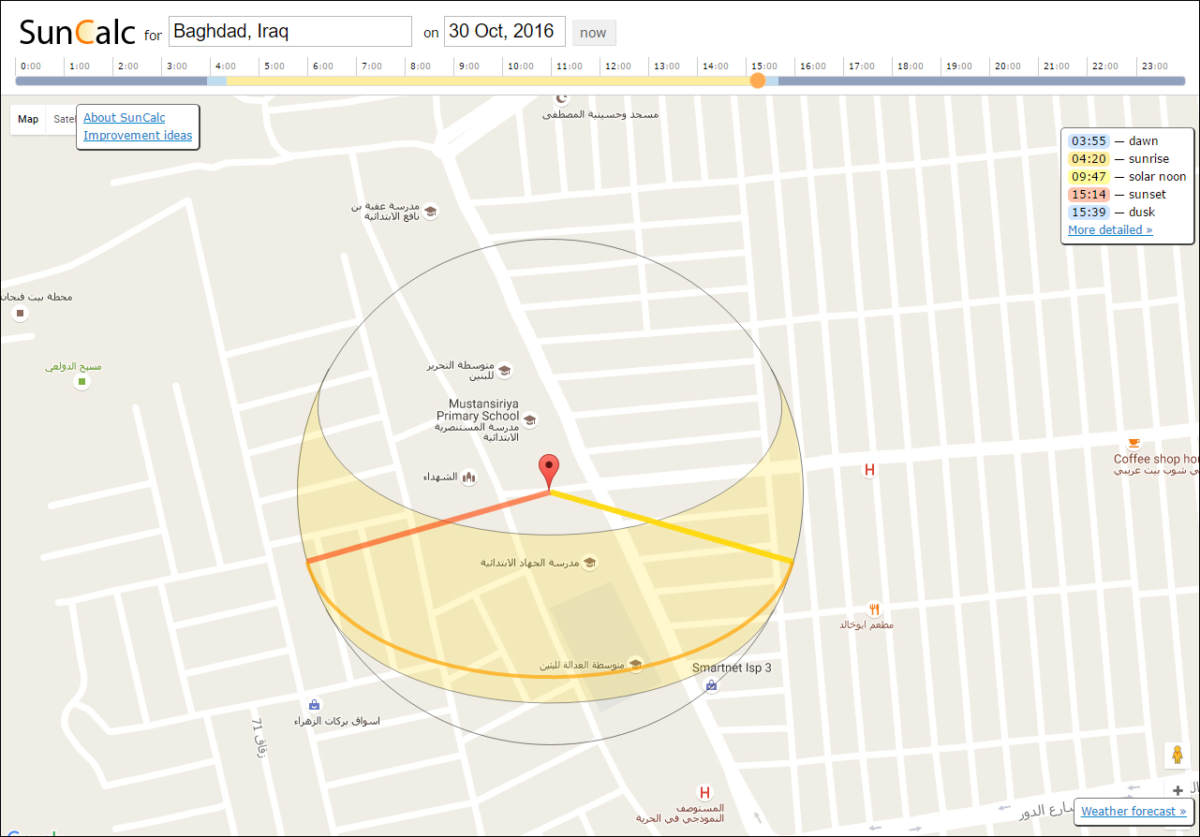
Figure 12 — Determining a rough estimate of time using SunCalc.
The second video of INP+ which shows a car smoking, was said to be showing October 30 too. If so, it is indeed at the end of the day, with long shadows in the street with sunlight coming from the west.
However, there are some oddities when it comes to the determination of the time. The wall behind the car on the surveillance video is already burned, as something was set or caught fire there before. This is remarkable, because the RT Arabic / Global News video appears to show these burning spots as the place of the explosion.
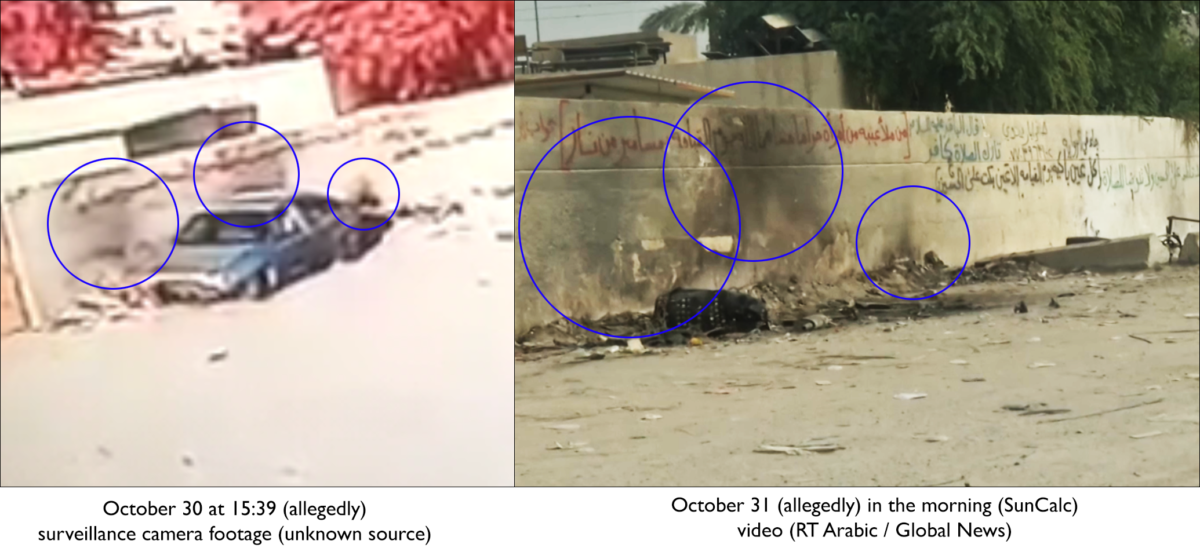
Figure 13 — Burn marks on the wall.
A citizen of Baghdad, on Twitter as “@aboudX2“, has visited the location on November 5 and says the following:
That wall is where garbage is always piled up by squatters who live around the corner from the school/bomb site. It’s burned every now and then.
A video he sent indeed shows a large amount of garbage piled up next to the wall where the car was parked.
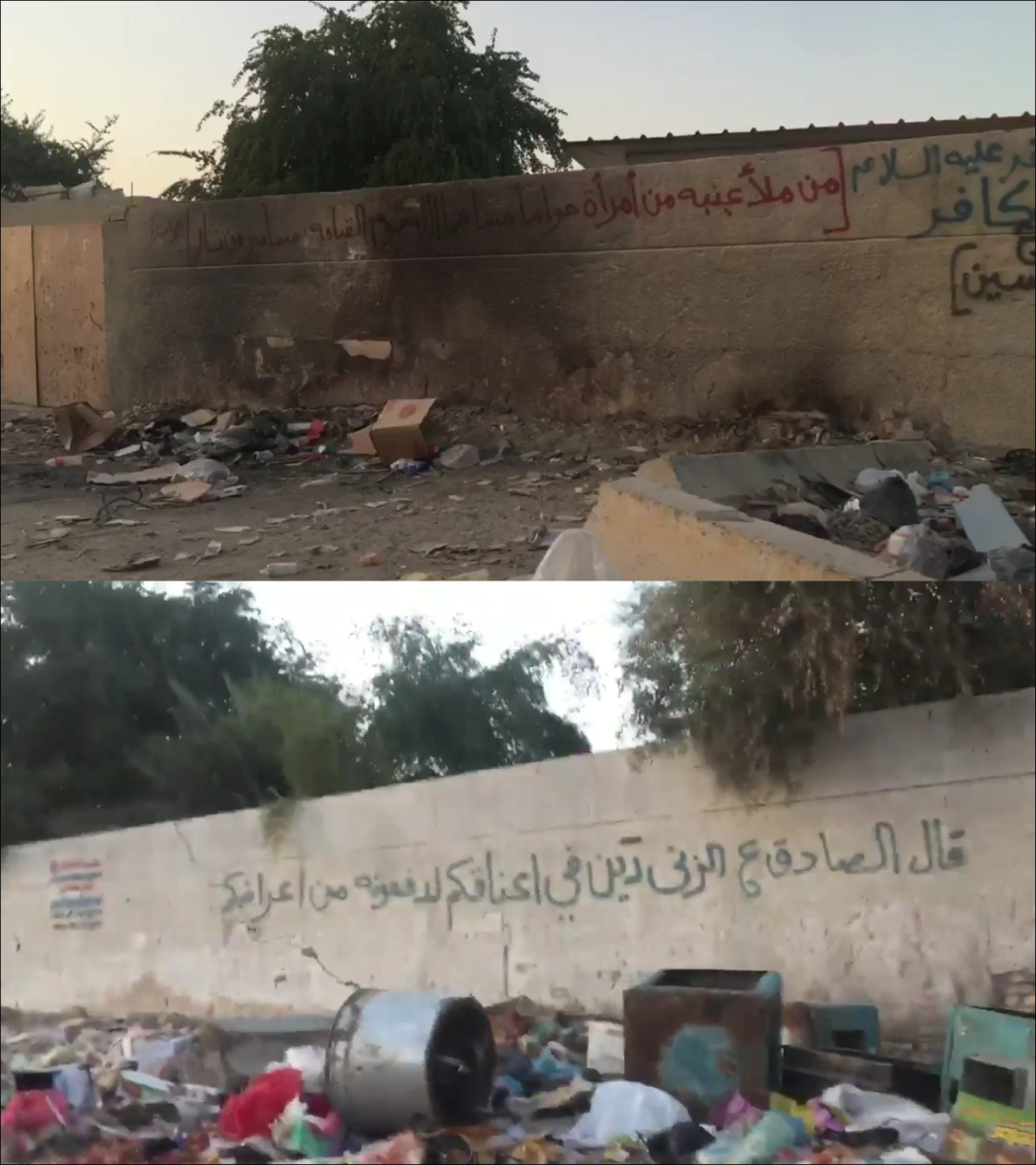
Figure 14 — Stills from a video that was sent to Bellingcat by Twitter user “@aboudX2” who visited the scene on November 5, 2016. The stills shows a large amount of garbage piled up at and near the location of the car bomb.
He has also shared a video and several photos with us, which indeed show the exact location of the surveillance camera as well as the large amount of trash near the wall.

Figure 15 — A photo taken on November 5, 2016, shows the area of the car bomb including the surveillance camera that captured the explosion. The photo was sent to us by Twitter user @aboudX2.
For what it’s worth, the yellow tanker truck parked on the south side of the street can be seen in both the surveillance footage as well as the INP+ footage. A white tanker truck can also be seen in front of the yellow truck.
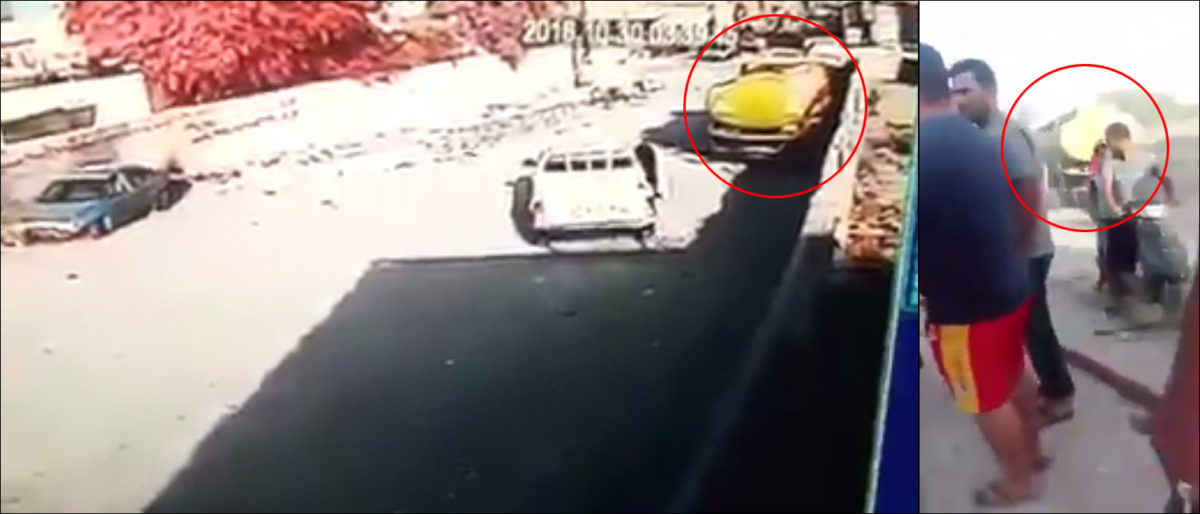
Figure 16 — Yellow tanker vehicle shown in both surveillance and INP+ videos.
Discussion
The video has been widely discussed on (Arabic) social media, especially Facebook. A lot of theories have emerged (some even claimed it was Aleppo, Syria [archived]).
The first theory that emerged that it was a staged attack by Shiites to inflame sectarianism against Sunnis in Iraq, as is said for example here, and here. The Al-Hurriyah neighbourhood is primarily a Shi’ite neighbourhood, with Sunnis making up only a quarter of its population in 2008. According to MEMO, Iraqi TV station Al-Rafidain “said that the blast was orchestrated by the Iraqi authorities in order to justify its marginalisation policies against the Sunni community as well as to encourage people to turn a blind eye to violence committed against them.”
However, Islamic State (IS) linked ʻAmāq News Agency also claimed in a news report published on Telegram on October 30 already that it was a car bomb detonated by the group. It mentions that the car bomb exploded in the Al-Hurriyah area.

Figure 17 — A news report published by ʻAmāq News Agency claims that IS was responsible for the car bomb in Al-Hurriyah.
There is also a theory that it was all just a film set, thus countering the sectarian narrative. A Facebook post of Ahmad Abu Al-Hassan (Ahmad Hatif) popped up, claiming it was all a misunderstanding. As of November 3, Ahmad Abu Al-Hassan has deleted that status since [archived profile, public Facebook page, Twitter].
Some doubts have been cast about the “it’s a film” story, as there is no visible barrier to mark the film set, nor are there any visible cameras. It would be interesting to know when the claim “it is a film” appeared for the first time – before or after the news report went public? So far, no post has been found which indicates the claim it is a film set appeared before the news report.
Perhaps, two car bombs exploded around the same time in the same district, with Reuters referring to a real car bomb and not to the staged car bomb. However, no footage has been found that could point to another car bomb in the Al-Hurriyah district – or in other parts of Baghdad – around the same date. Reuters did refer to a shopping street in the Al-Hurriyah district. The Al-Hurriyah Main Street is just across the road.
If it was indeed a film set, and no other car bomb went off that day, it raises the question why RT Arabic and AP filmed and photographed the area where a staged car bomb took place, and referred to eight being killed.
Others take it even further and suggest that it may have been a “double-fake” to create the impression that Shiites were lodging false reports. This theory is, arguably, supported by the burn marks on the wall that are mentioned above: does the surveillance footage shows a fake scene after a real car bomb exploded at the same location? It would explain the burn marks, it is suggested, as well as the attention received by RT Arabic and AP, proponents of this theory seem to argue.
Lastly, it has to be noted that the trees in the surveillance video are red, which is remarkable. There is no explanation for that, though some have suggested it may be a swapped colour channel from green to red, which is “[o]dd but not unheard of.” [Update: The colour problem with surveillance cameras has its own topic on the CCTV Forum.]
Conclusion
The (primarily) open source investigation has found that:
- All footage related to the car bomb incident was photographed or filmed at the same location in the Al-Hurriyah neighbourhood in north(west) Baghdad, Iraq (where);
- A car bomb indeed exploded in this street, but the only footage of the explosion shows that the casualties were pretending to be injured or dead. There is no open source information about a second car bomb in the Al-Hurriyah neighbourhood or wider Baghdad;
- RT Arabic and AP have published footage of the site of the staged car bomb explosion and claimed it was the location of a car bomb that killed several individuals. However, open source information suggests otherwise.
However, open source information has not been able to give satisfying answers about the who and why. Who did it, and why? Building on those questions are other curiosities: why did international news agencies cover the scene of a fake incident as if it was real? Did two car bombs explain? Open source has not found an answer.
As is evident, there are several open ends to this investigation. Therefore, any information that may alter the answers to these questions or support one of the mentioned or a new theory is welcome. You can contact me via Twitter (@trbrtc), or via e-mail (christiaantriebert@bellingcat.com). In case new information emerges that alters something of the above, this story will be updated.
Bellingcat has reached out to Reuters to ask for clarification about their report, but so far we have not received a reply.
Updates
Update 1 (Nov. 4 at 22:12 UTC).
I have updated the section on the red trees on the surveillance camera footage. This appears to be a problem that is not uncommon with such cameras, as a topic on the CCTV Forum shows. We have also ourselves experimented with the colour channels on a surveillance camera and it appears that the red channel was replaced with the infrared channel, thus explaining the red instead of green leaves.
Update 2 (Nov. 4 at 22:36 UTC).
I have updated the section on the theory that this was a false flag incident by inserting a quote and linking to MEMO.
Update 3 (Nov. 5 at 13:29 UTC).
I have included two new photos and one video of the aftermath of the car bomb via the same Facebook source. Thanks to Twitter user “@iraqiblogger” for bringing this to our attention.
Update 4, Nov. 5 at 14:36 UTC.
Burn marks on wall, footage from today.
Update 5 (Nov. 5 at 15:49 UTC).
I have included a section under “Discussion” on the ʻAmāq claim that it was IS.
Update 6 (Nov. 5 at 15:54 UTC).
Twitter user “@aboudX2” from Baghdad visited the area and shared photos and a video with us. I have updated several section related to the burn marks on the wall, as he claims that it is an area “where garbage is always piled up by squatters who live around the corner from the school/bomb site. It’s burned every now and then.” That appears to explain the burn marks on the wall. Video footage confirms there is a lot of trash next to the wall.
Update 7 (Nov. 7, 2019).
Thanks to several readers, the mystery has been solved: it was an undercover operation by Iraq’s Falcon Intelligence Cell, who penetrated Islamic State ranks. Read more at The New York Times (“The Iraqi Spy Who Infiltrated ISIS”) and The New Zealand Herald (“Fake bombs and actors playing dead: The world’s most dangerous undercover operation”).
